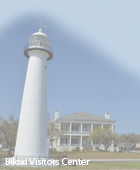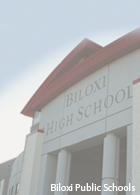The cost of home-heating fuels and utilities has caused many residents to search for alternate sources of home heating. Residents are using wood-burning stoves and space heaters, and homes with fireplaces are burning wood and man-made logs. All these methods of heating may be acceptable; however, they are a major contributing factor in residential fires. Many of these fires can be prevented. The Biloxi Fire Department and the Federal Emergency Management Agency encourage you to follow these safety tips to maintain a fire-safe home this winter:
Kerosene heaters
- Be sure your heater is in good working condition. Inspect exhaust parts for carbon buildup. Be sure the heater has an emergency shut off in case the heater is tipped over.
- Never use fuel burning appliances without proper room venting. Burning fuel (coal, kerosene or propane, for example) can produce deadly fumes.
- Use only the fuel recommended by the heater manufacturer. Never introduce a fuel into a unit not designed for that fuel.
- Keep kerosene and other flammable liquids stored in approved metal containers, in well-ventilated areas, outside of the house.
- Never fill the heater while it is operating or hot. When refueling an oil or kerosene unit, avoid overfilling. Do not use cold fuel because it may expand in the tank as it warms up, causing overflow.
- Refueling should be done outside of the home.
- Keep young children away from space heaters, especially when they are wearing night gowns or other loose-fitting clothing that can be easily ignited.
- When using a fuel-burning appliance in the bedroom, be sure there is proper ventilation to prevent a build up of carbon monoxide.
Wood stoves and fireplaces
- Be sure the fireplace or stove is installed properly. Wood stoves should have adequate clearance – at least 36 inches – from combustible surfaces, and have proper floor support and protection.
- Wood stoves should be of good quality, solid construction and design, and should be UL listed.
- Have a chimney professionally inspected annually and cleaned if necessary, especially if it has not been used in some time.
- Do not use flammable liquids to start or accelerate a fire in a fireplace or wood stove.
- Keep a glass or metal screen in front of the fireplace opening to prevent embers or sparks from escaping and to prevent unwanted material from going into the fireplace, and to help prevent the possibility of burns to occupants.
- A wood-burning stove should be burned hot twice a day for 15 to 30 minutes to reduce the amount of creosote buildup.
- Don’t use excessive amounts of paper to build roaring fires in fireplaces. Overbuilding the fire could ignite creosote in the chimney.
- Never burn charcoal indoors. Burning charcoal can give off lethal amounts of carbon monoxide.
- Keep flammable materials away from your fireplace mantel. A spark from the fireplace could easily ignite these materials.
- Before you go to sleep, be sure your fireplace fire is out. Never close your damper with hot ashes in the fireplace. A closed damper can help rekindle the fire, forcing toxic carbon monoxide into the house.
- If synthetic logs are used, follow the directions on the package. Never break a synthetic log apart to quicken the fire, and never use more than one log at a time. They often burn unevenly, releasing higher levels of carbon monoxide.
Furnace heating
- It’s important that you have your furnace inspected to ensure that it is in good working condition.
- Be sure all furnace controls and emergency shutoffs are in proper working condition.
- Leave furnace repairs to qualified specialists. Do not attempt repairs yourself unless you are qualified.
- Inspect the walls and ceiling near the furnace and along the chimney line. If the wall is hot or discolored, additional pipe insulation or clearance may be required.
- Check the flue pipe and pipe seams. Are they well-supported, free of holes and cracks? Soot along or around seams can indicate a leak.
- Is the chimney solid, with cracks or loose bricks? All unused flue openings should be sealed with solid masonry.
- Keep trash and other combustibles away from the heating system.
Other fire safety tips
- Never discard hot ashes inside or near the home. Place them in a metal container outside and well away from the house.
- Never use a range or an oven as a supplemental heating device. It is a safely hazard and can be a source of potentially toxic fumes.
- If you use an electric heater, be sure not to overload the circuit. Use only extension cords that have the necessary rating to carry the amp load. Choose an extension cord the same size or larger than the appliance electrical cord.
- Avoid using electrical space heaters in bathrooms or other areas where they may come in contact with water.
- Frozen water pipes? Never try to thaw them with a blowtorch or other open flame. The pipe could conduct the heat and ignite the inside of the wall. Use hot water or a UL-labeled device such as a hand held dryer for thawing.
- If windows are used as emergency exits in your home, practice using them in the event of a fire. Be sure that all the windows open easily. Home escape ladders are recommended.
- If there is a fire hydrant near your home you can assist the fire department by keeping the hydrant clear of obstacles so it can be easily located.
Finally…
- Every bedroom and common area outside the bedrooms should have a working smoke alarm, and be sure to check and clean it on a monthly basis.
- Plan and practice a home escape plan with your family.
- Contact your local fire department for advice if you have a question on Home Fire Safety. The Fire Prevention Bureau of the Biloxi Fire Department can be reached at 435-6209.































